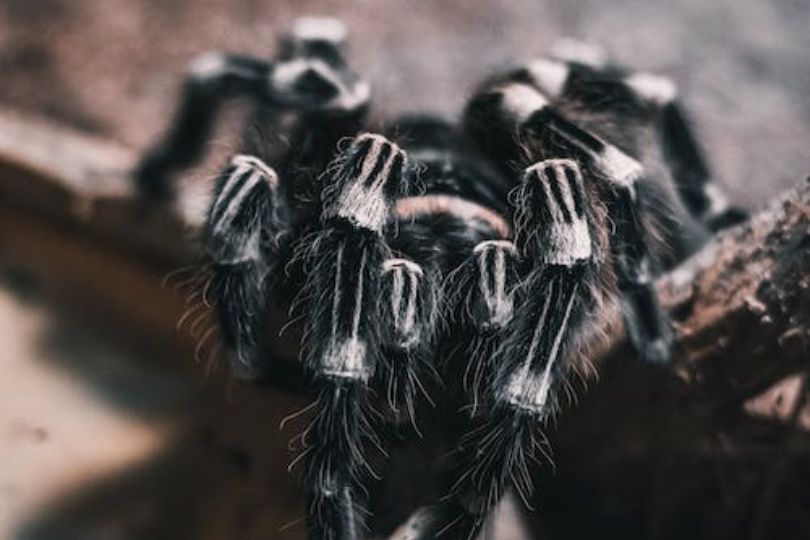Spiders as Pets: A Web of Wonder for Beginners
A spider as pet is always a tempting thought for several pet owners. Their strange and weird appearance, mysterious way of living, and myths have made them such a charming and somewhat dangerous creatures. But don’t worry, be ready to dive into the fascinating world of eight-legged friends. Because I know how spiders as pets may look and feel like for an average household. Today, we’re going to explore why keeping a spider as pet is not only a great idea but also a thrilling adventure. So, grab a seat, and let’s untangle the web of intrigue surrounding these remarkable creatures.
Spiders as Pets: Not Your Average Companions
Let’s start with the elephant in the room – or rather, the spider on the wall. Why in the world would someone want a spider as a pet? Well, let me spin you a tale of wonder!
Why Spiders as Pets Can Be a Great Thing
- Low Maintenance, High Reward: First and foremost, spiders are the perfect choice for pet owners who want low-maintenance pets. Forget about daily walks or litter boxes; these critters require little more than a suitable enclosure, some insects for dinner, and a watchful eye.
- Elegance in Eight Legs: Spiders come in an array of shapes, sizes, and colors, making them a visually captivating addition to your household. From the delicate orb-weavers to the striking tarantulas, there’s a spider to suit every taste.
- Educational Value: Think of your spider as a mini science experiment at home. By observing their behavior, molting, and hunting techniques, you’ll gain a deeper appreciation for the intricacies of nature.
- Conversation Starter: Ever wanted a unique icebreaker at social gatherings? Well, look no further. Sharing tales of your pet spider’s adventures is sure to make you the life of the party.
- Exotic Appeal: The thrill of owning an exotic pet without the complexity – that’s what spiders offer. You can even find exotic spiders for sale if you’re looking for something out of the ordinary.
Now that we’ve piqued your interest, let’s not jump headfirst into the spider’s den. There are a few essential considerations you should keep in mind before inviting these eight-legged friends into your home.
Top Considerations Before Keeping Spiders as Pets
- Allergies and Phobias: Be honest with yourself. Do you have any allergies to spider venom? Or a crippling fear of the creatures? If so, perhaps a pet beetle would be a better fit for you. But if you’re willing to face your fears, the rewards can be extraordinary.
- Local Regulations: Check your local laws and regulations regarding pet spiders. Some species might be off-limits, so it’s crucial to know what’s allowed in your area.
- Space and Enclosure: Different spider species have different space requirements and enclosure needs. Some need vertical space, while others are terrestrial. Research your chosen spider’s habitat to ensure it’s adequately housed.
- Feeding Habits: Spiders are carnivores, and they dine on a diet of live insects. Are you ready to handle this aspect of their care? Pet bugs for beginners might be a good stepping stone if you’re not quite ready for the real deal.
- Lifespan and Commitment: Spiders can live for several years, and some species have longer lifespans than others. Are you ready for a long-term commitment? Consider this before bringing a spider into your life.
How to Take Care of Spiders as Pets: A Beginner’s Guide
So, you’ve weighed the pros and cons and decided that spiders as pets are right for you. Congratulations! Now, let’s get into the nitty-gritty of spider care, without getting tangled up in the details.
- Choosing the Right Spider: Start by selecting a beginner-friendly species, like the Chilean Rose Tarantula or the Jumping Spider. These species are relatively easy to care for and provide an excellent introduction to spider ownership.
- Creating the Perfect Enclosure: Your spider’s home should mimic its natural habitat. Ensure proper ventilation, temperature, and humidity levels. Don’t forget to provide hiding spots and substrate, like peat moss or coconut coir.
- Feeding Your Spider: Time to play the role of the chef! Spiders thrive on live insects such as crickets, mealworms, or roaches. Remember to dust the insects with a calcium supplement for added nutrition.
- Handling with Care: While some spiders tolerate gentle handling, most are best observed from a distance. Avoid handling venomous species altogether, and always wash your hands before and after any contact.
- Molting Moments: Spiders molt to grow, shedding their old exoskeletons. During this vulnerable time, it’s essential to provide a stress-free environment and avoid disturbing your spider.
- Health Checks: Keep a watchful eye on your pet. If you notice any changes in behavior or appearance, consult a veterinarian with experience in arachnid and insect care.
- Socialization and Enrichment: Despite their solitary nature, spiders benefit from a bit of socialization. Spend time observing their activities and providing environmental enrichment through different hiding spots or climbing opportunities.
- Reproduction Concerns: Be prepared for the possibility of spiderlings if you have a male and female spider. Ensure you have a plan for housing and caring for the offspring.
- The Art of Patience: Spider care is a journey, not a destination. Expect ups and downs along the way, but remember that every challenge is an opportunity to learn and grow as a spider owner.
- A Word of Warning: Always do your research and consult experts or experienced hobbyists when in doubt. Spiders are unique creatures with specific needs, and their well-being should be your top priority.
So, there you have it – the basics of caring for spiders as pets. It’s not as complex as it may seem, and with the right mindset and knowledge, you’ll find it to be a rewarding and fascinating experience.
In conclusion, embracing spiders as pets can be a great adventure for those willing to take the plunge. These captivating creatures offer a low-maintenance, high-reward experience, all while adding a touch of exotic elegance to your life. Just remember to consider your allergies, local regulations, and space before bringing a spider into your home.
Once you’ve made the decision, follow our pet care guides to provide your new arachnid companion with a comfortable and enriching life. Always approach spider ownership with patience and a sense of wonder, for you are about to embark on a web-spinning journey like no other. Happy spider-keeping!







